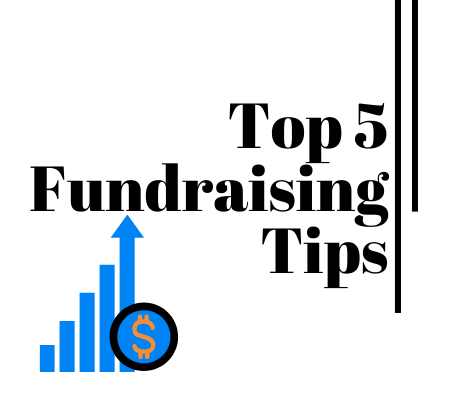5 Best Practices to Running a Successful Fundraiser!
5 Best Practices to running A Successful fundraiser.
Running a fundraiser can be very challenging. Not only do you have to choose the right product, but you also have to make sure you execute during your sale to deliver the best results. This can cause added layers of stress to your life in attempting to reach your fundraising goals. Don't fret, we have you covered with "5 Best Practices to Running a Successful Fundraiser."
1.) Create a list of your supporters
Creating a list of supporters is vital to the overall health and success of your campaign. It is best to compile a list of alumni, boosters, parents, family, teachers, and community members to support your efforts. Having a list prior to the sale takes the stress out of trying to find supporters during the sale, and let's you use that time to focus on expanding your reach and managing your group members activity.
2.) Create Mini Goals
You may have a goal to raise $10,000 by the end of your sale, but exactly how do you get there? Often times there is a dash at the end of a sale to meet goals, but the best practice is to create mini goals during your campaign to increase activity. For example, if you have 20 sellers, a goal of $10,000 over a two week period, that is roughly $35 per seller, per day. In this instance create a 3-Day check-in and ask who has hit their "$100 Goal". Do this a few times during your campaign to track success. This will also allow you to adjust your techniques and see which members might not meet their end goal, allowing you to allocate time to help or lean on other students, or your supporter list to reach your goals.
3.) Schedule Your Supporter Outreach
Most groups create a contact list, then email everyone on the list, or create a Facebook post to let everyone know they are raising funds. While this is a great idea, it is not enough. You need to treat it like a marketing campaign and we recommend you follow the rules of 5. That is 5 emails and 5 Posts to your supporters. It is best that your emails and social media posts have similar messages and timing.
The first email and post is to let your supporters know the sale has started, and the amazing benefits of your sale. The second is a quick update about 3 days later again highlighting the sale and why you are raising money. The third should be an update half way through your sale, letting them know how close to your goals you are and that you still need help to reach those goals. The fourth and fifth are during the last 2 days of your fundraiser, again highlighting your goals and creating a sense of urgency to complete your sale.
4.) Ask for help
It may go without saying, but asking for help can be a lifesaver during a campaign. At SaveAround we hear from many group leaders that they were "the only one running the sale", we know how hard this can be, and it is important that you reach out personally and ask members or parents for help with the sale. Many Hands make light work!
5.) Say "Thank You"
Now more than ever, funds may be not as easily dispensable for your supporters. If possible, we encourage our groups to have their members or the group leader send out a personalized "Thank You" to their supporters. For larger groups this can be a generic template, but with the supporters name changed to create that personal touch. The satisfaction for the supporter knowing that they helped a group they cared about will go a long way!
If you need any help or are looking for a Fundraiser this year, SaveAround is here to help! With over 40 years of fundraising experience, we have the tools and people to help you reach your goals!


